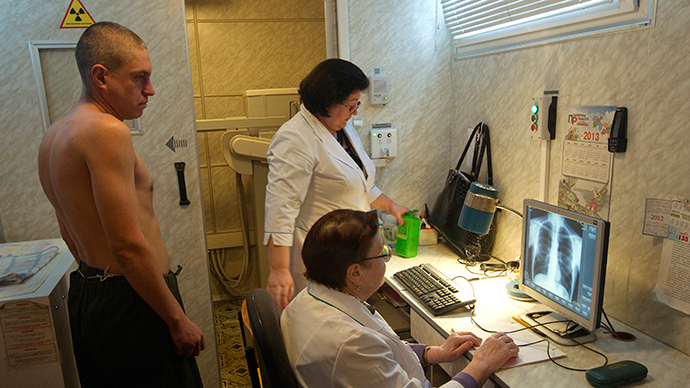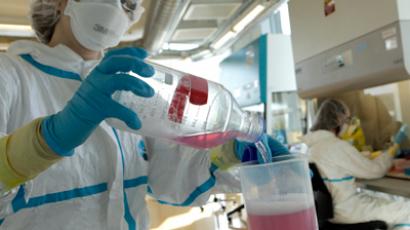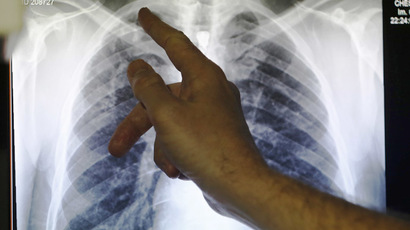Tuberculosis epidemic much worse than people think – WHO

The world’s preoccupation with the Ebola virus has eclipsed almost any attention to other health hazards. But the tuberculosis epidemic is now considered to be much more severe than before, the WHO has claimed in a report.
Back in the day tuberculosis (TB) was known as the ‘white plague’ for its tendency to make people skinny and pale, accompanied by frequent blood-flecked coughing. It was also known as ‘consumption’, with such famous patients as Anton Chekhov and George Orwell succumbing to the disease.
TB is considered to be the world’s second most ruthless killer after HIV/AIDS. Hopes of eradicating it completely are experiencing a considerable setback: the World Health Organization (WHO) announced Wednesday that last year saw twice as many new cases appear than previously estimated.
The 19th global report by the health body drew a grim picture with data pointing to 9 million cases in 2013, of which 1.5 million died from lack of available treatment or timely diagnosis.
5 facts about TB:
- 1/3 of the world’s population has tuberculosis (TB) bacteria, but only a small proportion become sick with it.
- Risk factors are a weak immune system, HIV.
- HIV positive people are 26 to 31 times more likely to develop TB
- In 2013, 9 million people fell ill with TB, the WHO estimates.
- A total of 1.5 million people died from TB in 2013
Although the global mortality rate has declined by 45 percent since 1990, the fact that the disease is curable makes current rates look extremely high.
“Given that most deaths from TB are preventable, the death toll from the disease is still unacceptably high and efforts to combat it must be accelerated if 2015 global targets, set within the context of the Millennium Development Goals (MDGs), are to be met,” the report said.
The agency added in that some regions, particularly Eastern Europe and Central Asia are rated “severe” for epidemic levels, while successful treatment levels in many at-risk countries is “alarmingly low.”
Even so, all six of the WHO’s geographical areas, as well as 22 of the higher-risk TB countries, have seen success in “halting and reversing TB incidence” as part of a 2015 development goal, the reports says.
The danger with late diagnoses is prevalent because TB spreads by air and can live inside a person for years before symptoms begin to show up. It is believed to have killed more people worldwide than all the wars and famines combined, according to the WHO.
Another facilitator is mutation: TB has many strains, and multidrug-resistant levels remain high. This is in part due to the high cost of diagnosing and treatment.
READ MORE: TB continued: Drug-resistant strain of deadly disease alarms doctors worldwide
"Access to proper treatment is drastically low: Only one in five people with multidrug-resistant TB receives treatment; the rest are left to die, increasing the risk to their families and communities and fueling the epidemic," Grania Brigden, a TB expert with Doctors Without Borders, told Reuters.
The WHO believes there is insufficient funding directed toward TB eradication; and that money is declining at a time when it needs to be increased. At least $8 billion a year would be needed to manage the spread, but even the richest public donors and institutions fail to make that happen.















